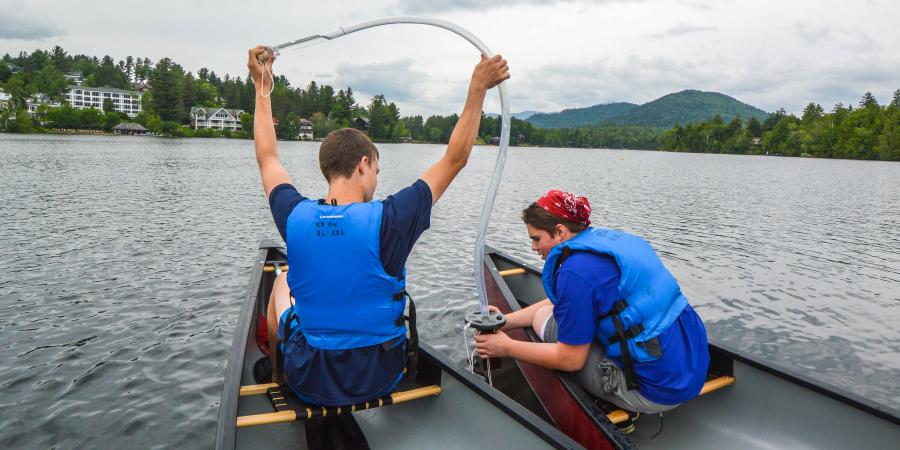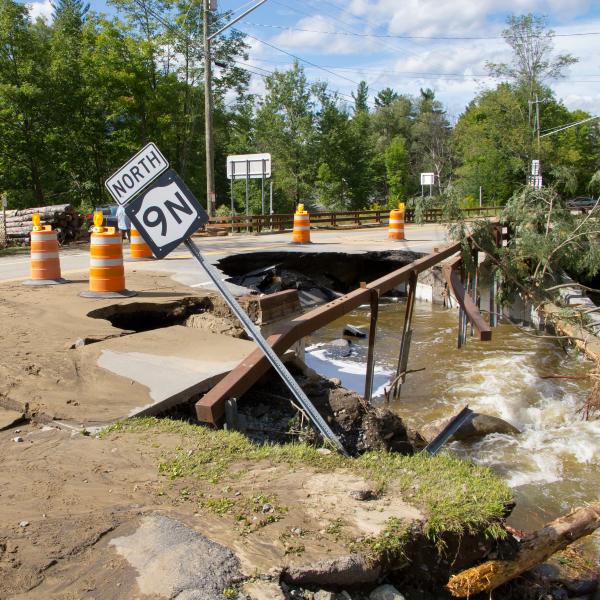The Ausable Freshwater Center (AFC) believes that replicable, science-based water quality monitoring broadens our understanding of and ability to respond to three threats to the watershed: road salt, phosphorus, and climate change. Water quality monitoring is essential to understanding these challenges, developing plans to mitigate them, establishing goals, and evaluating and quantifying progress. AFC has developed the following monitoring programs within the Ausable River watershed.
River Monitoring
We monitor temperature, dissolved oxygen, specific conductance, and pH at 30 stream locations throughout the watershed on a monthly basis. This effort helps us identify where major water quality problems occur and predict future problems. We are tracking two primary pollutants, chloride and sodium. Both enter the river as a result of winter road deicing practices. Specific conductance measures the ability of water to conduct an electrical current, which indirectly measures the salinity of the water.
AFC is working with Adk Action in the townships of Harrietstown, NY and Peru, NY to reduce the application of road salt on local roads. AFC scientists are performing quarterly water quality monitoring and installing conductivity loggers at three sites on two streams in each town. The loggers will provide continuous data at 30-minute intervals showing the increased effects of salt concentrations as the number of road crossings increases on a stream.
Lake Monitoring
AFC is monitoring water quality at Mirror Lake, Upper Cascade Lake, Lower Cascade Lake, and Taylor Pond. This work has been supported by Mirror Lake Watershed Association, Town of Wilmington, NY State Department of State, and private donors. In addition to collecting surface water samples from each lake during the summer months, AFC's staff also takes vertical profiles of temperature, dissolved oxygen, specific conductance, and pH. These data help us understand the impact phosphorus, road salt, and climate change are having on our lakes.
The Survey of Climate and Adirondack Lake Ecosystems (SCALE) builds upon the legacy of the 1984 Adirondack Lakes Survey, the Adirondack Long-term Monitoring Program, and other acidification focused studies, leveraging the latest technological advances for detecting climatic variables. Many of the parameters which were vital to understanding acid deposition, such as pH, nutrients, metals, and dissolved organic carbon, will continue to be collected under SCALE. These chemical indicators, in combination with an expanded suite of analyses focused on climatic variables, will provide the most comprehensive view of Adirondack lake chemistry to date.
River Temperature Monitoring
AFC has placed 20 temperature data loggers in the Ausable River and tributary streams to provide a continuous measure of water temperature. Warmer waters threaten the survival of many native Adirondack species, most notably Brook Trout. Given the challenges posed by current global conditions, our goal is to understand where waters are warming in the watershed, whether our restoration efforts have a cooling effect, and the long-term suitability of the Ausable and its tributaries as habitat for Brook Trout.



